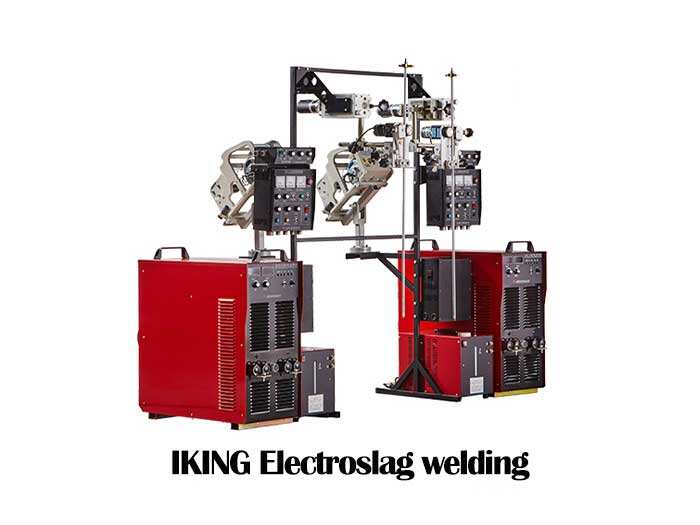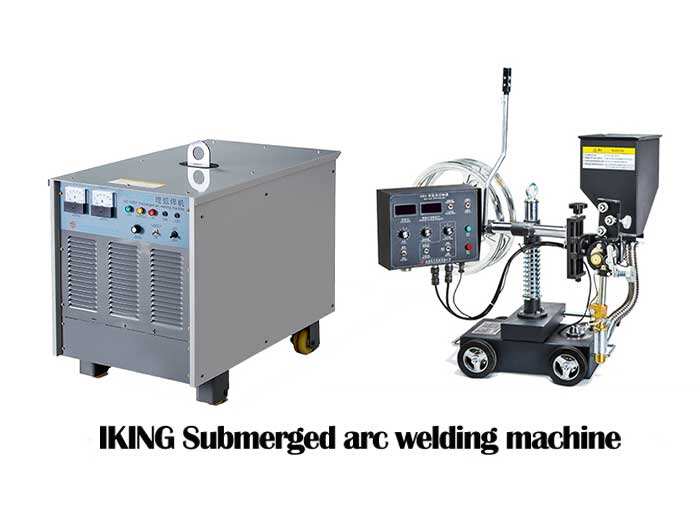In the field of thick plate welding, electroslag welding and submerged arc welding are two mainstream processes, but many engineering teams are often confused when choosing: What is the core difference between the two? Why do some people recommend electroslag welding for thick plate welding, while submerged arc welding is more common in pipeline construction? This article will conduct an in-depth comparison from the dimensions of technical principles, efficiency, cost, and applicable scenarios to help you accurately match project requirements.
1. Comparison of technical principles: resistance heat vs. arc heat
1.1 Electroslag welding: a "heat energy factory" for slag conduction
Working principle: The resistance heat generated by the current passing through the liquid slag is used to melt the parent material and filler metal to form a continuous weld.
Core features: Deep penetration ability: One welding can form a plate with a thickness of more than 300mm without beveling.
Low heat input: small heat-affected zone and controllable welding deformation.
1.2 Submerged arc welding: "cooperative operation" of arc and flux
Working principle: The arc burns under the flux layer to melt the welding wire and parent material, and the flux protects the molten pool and deoxidizes at the same time.
Core features: High efficiency and stability: suitable for medium and thick plates (6-100mm), welding speed can reach 30-50cm/min.
Automation friendly: can be used with an automatic wire feeder to achieve long straight welds.


Summary of key differences
| Dimensions | Electroslag welding | Submerged Arc Welding |
| Heat source | Slag resistance heat | Arc heat |
| Applicable thickness | 20mm and above (especially thick plates) | 6-100mm |
| Heat input | Low (small deformation) | Medium |
| Equipment complexity | High (requires slag pool control system) | Low (conventional welding equipment is sufficient) |
2. Comparison of four core indicators: efficiency, cost, and quality
2.1 Welding efficiency:
Electroslag welding: thick plates are formed in one time, without layered welding, suitable for ultra-thick plates (such as pressure vessels and ship sections).
Submerged arc welding: multi-layer and multi-pass welding is required, and the efficiency is limited by the number of weld layers.
2.2 Cost investment:
Electroslag welding: high equipment cost (dedicated power supply, slag pool system), but saves labor and later grinding costs.
Submerged arc welding: high equipment popularity, large flux and welding wire consumption, suitable for mass production.
2.3 Weld quality:
Electroslag welding: easy to produce pores and slag inclusions, and process parameters (such as slag pool temperature) need to be strictly controlled.
Submerged arc welding: uniform weld formation, low pore risk, but large heat-affected zone.
2.4 Applicable scenarios:
Electroslag welding: ultra-thick plate scenarios such as nuclear power pressure shells, LNG ship liquid tanks, and bridge steel structures.
Submerged arc welding: industrial mass production scenarios such as pipelines, storage tanks, medium and thick plate steel structures.
3. How to choose?
3.1 Material thickness: electroslag welding for thick plates, submerged arc welding for medium and thick plates
Case: A petrochemical project needs to weld 80mm carbon steel storage tanks - submerged arc welding layered welding costs are lower, while 300mm nuclear reactor pressure vessels must use electroslag welding.
3.2 Project budget: trade-off between equipment investment and long-term benefits
Short-term cost sensitivity: choose submerged arc welding (such as batch pipeline construction).
Long-term quality priority: invest in electroslag welding (such as ship segment welding to reduce subsequent repairs).
3.3 Process compatibility: complex structure vs. simple straight weld
Electroslag welding: only suitable for flat welding or horizontal welding positions, cannot weld fillet welds.
Submerged arc welding: can be adapted to a variety of positions, but automatic welding is limited by the shape of the weld.
3.4 Defect tolerance: sensitivity to pores and deformation
High precision requirements (such as pressure vessels): Electroslag welding needs to be combined with ultrasonic flaw detection, and submerged arc welding is easier to control.
4. Industry application examples for reference
4.1 Typical scenarios of electroslag welding
Shipbuilding: LNG ship tank welding (thickness up to 45mm, one-time molding).
Nuclear power equipment: steam generator tube sheet welding (eliminating the risk of thermal cracks).
4.2 Typical scenarios of submerged arc welding
Oil pipeline: fully automatic welding of long straight welds, efficiency increased by 40%.
Bridge steel structure: H-beam welding, taking into account both strength and cost.
5. Conclusion: There is no "best", only "most suitable"
Electroslag welding and submerged arc welding are not in opposition, but complementary technical tools:
Choose electroslag welding when the project involves ultra-thick plates, complex structures, and a sufficient budget.
Choose submerged arc welding: when pursuing high cost performance, mass production, or straight welds of medium and thick plates.
If you have the purchasing needs of high-quality welding equipment or want to know more details, please contact us IKING GROUP and let us provide you with high-quality customized services.
 Hot News
Hot News2025-09-15
2025-09-11
2025-09-08
2025-09-02
2025-08-27
2025-08-14